On View
8 Highlights From the Honolulu Biennial, From Imelda Marcos’s Jewelry Collection to 100 Portraits of Native Hawaiian Leaders
Can't make it out to the Aloha State? We rounded up the best of what you're missing.
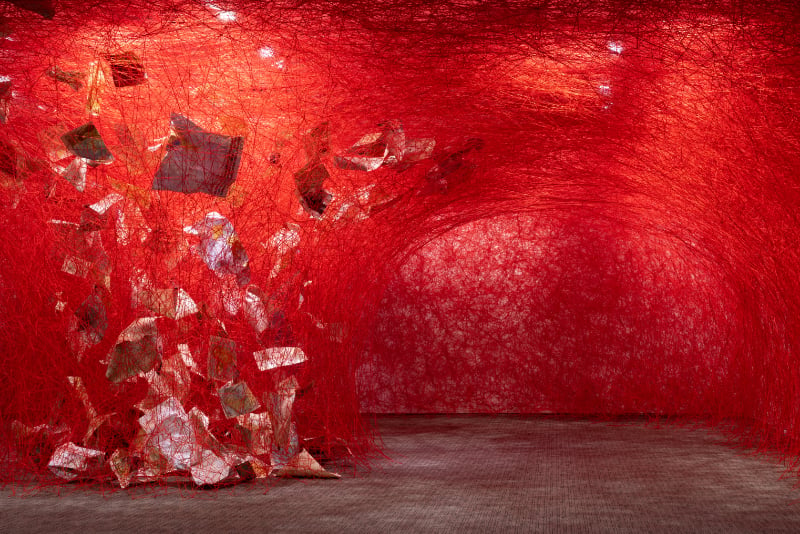
Can't make it out to the Aloha State? We rounded up the best of what you're missing.

Sarah Cascone

As the last state to enter the union, in 1959, Hawaii is distinct from the rest of the US, which sits on the mainland. The state, a deceptively sleepy archipelago resting atop a hotbed of volcanic activity, with the ever-present threat of unstoppable flows of molten lava, has a unique identity, shaped by geologic forces as well as colonialism. That identity pervades every aspect of island life, from the food to the language to the visual arts—including the second edition of the Honolulu Biennial, on view through May 5.
The exhibition, sprinkled across 13 sites throughout the city, takes a distinctly Pacific point of view, and is deeply rooted in the concerns of indigenous people, both in Hawaii and further afield. The exhibition’s title, “To Make Wrong/Right/Now” (taken from a poem, “Manifesto,” by Imaikalani Kalahele, a Native Hawaiian) considers ancestry as a way of rectifying colonial injustice. (Kalahele is one of 19 local artists included in the show, along from 28 from the mainland and foreign countries.)
The biennial features no shortage of powerful, thought-provoking artworks that shocked this critic out of her default New York-centric mindset. Collectively, the works position Hawaii at a global crossroads, both culturally and geographically. Sometimes, it was hard to believe that I was still the US.
Seeing the biennial in its entirety is something of a challenge, with several venues closed between Friday at 4 p.m. and Monday morning. And it wasn’t always clear where the works were at a given site. The art at the Bernice Pauahi Bishop Museum – Hawaii State Museum, for instance, blended in almost seamlessly with the permanent collection of native Hawaiian artifacts. James Bamba’s contemporary interpretations of traditional woven pandanus leaf objects and Bruna Stude’s scroll sculptures, for example, hang subtly from a ‘Ulu tree on the museum grounds. Almost no signage pointed the way.
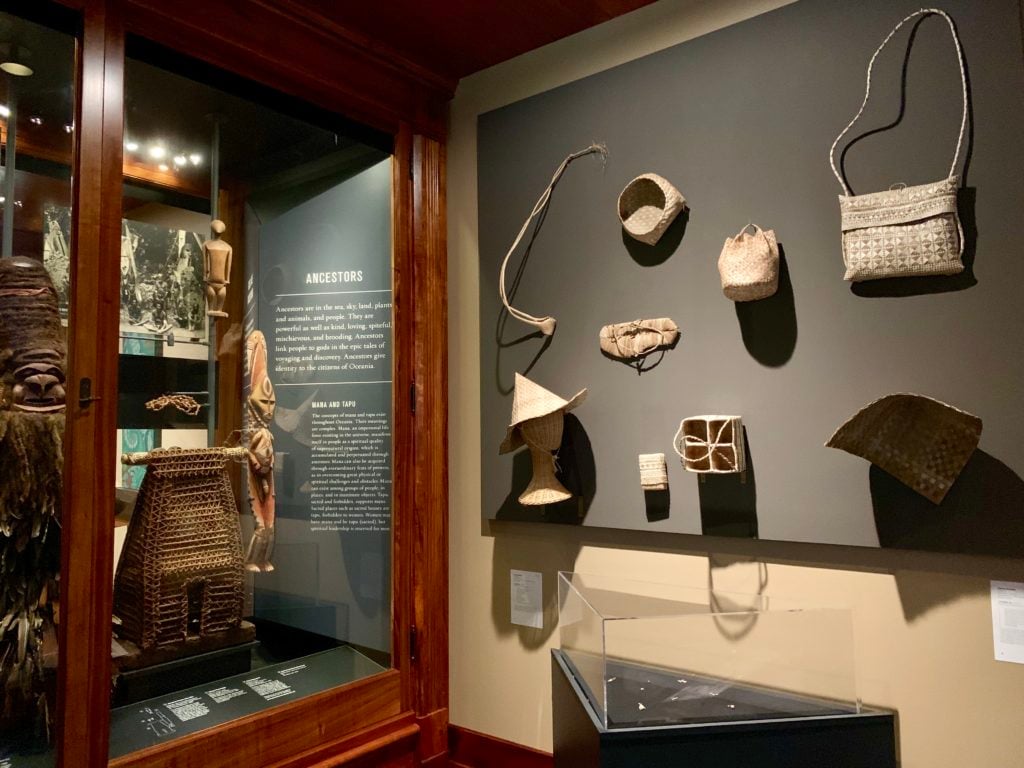
Native Hawaiian artifacts, left, and James Bamaba’s contemporary interpretations of traditional woven pandanus leaf objects, right, at the Bernice Pauahi Bishop Museum – Hawaii State Museum for the Honolulu Biennial. Photo by Sarah Cascone.
On the other end of the spectrum was the Hawaii State Art Museum, where a pair of incredibly friendly and knowledgable volunteers from—improbably enough—the National Federation of the Blind guided me through the exhibition, pointing out the salvaged materials in Kalahele’s minutely detailed display, “Thirty Years of Miniature Sculptures.”
They led me down the hall to Janet Lilo’s Man in the Mirror, an array of laptop computers made out of cardboard mocking our reliance on mobile technology, hidden out of the way in a mirrored room last used as a dance studio.
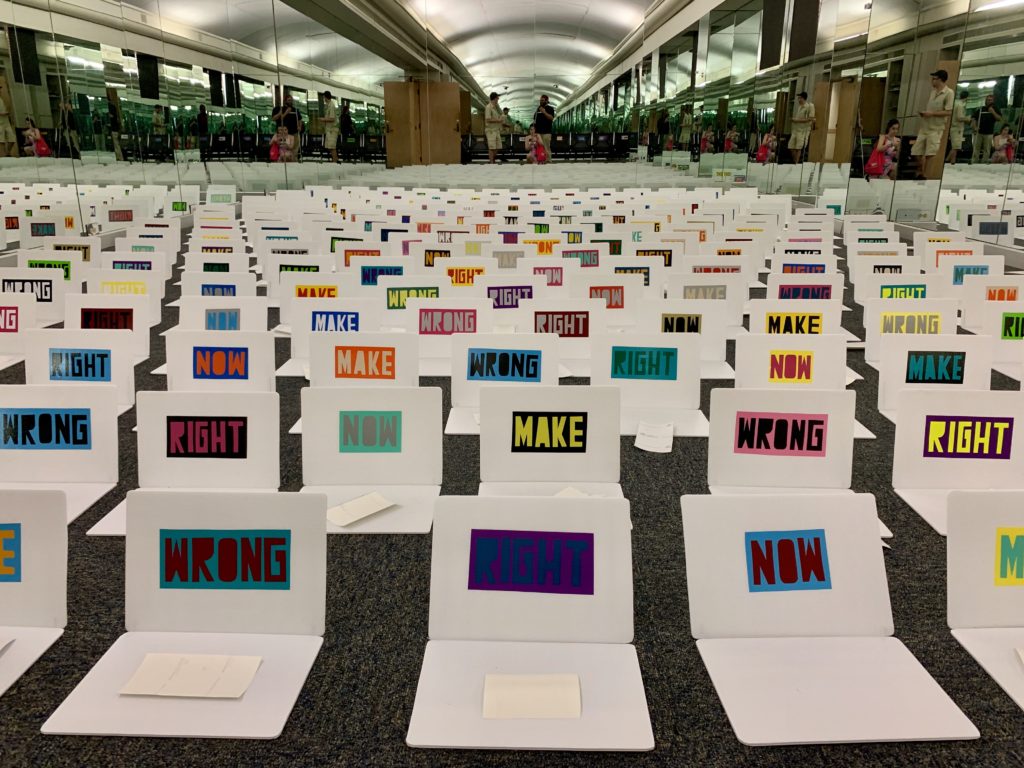
Janet Lilo, Man in the Mirror, at the Hawaii State Art Museum for the Honolulu Biennial. Photo by Sarah Cascone.
This kind of unconventional venue was typical of the exhibition as a whole. The biennial hub is located in a former Famous Footwear in Ward Village, a downtown shopping complex—something of a makeshift arrangement. (The curators make the most of it by dedicating the bulk of the space to video art, including Andy Graydon’s fascinating A*, a four-channel installation explaining Hawaii’s relationship to the Event Horizon Telescope that successfully captured the first-ever image of a black hole.) By comparison, it’s a relief to visit the Honolulu Museum of Art, where two beautiful galleries have been given over to the exhibition.
That the biennial came together at all is somewhat impressive. Of the curatorial team of three originally announced in September 2017, only one, Nina Tonga, saw the exhibition through to its opening date. Jens Hoffmann was fired that December following allegations of sexual misconduct at New York’s Jewish Museum. Scott Lawrimore, credited on the biennial website as “Curator in Absentia,” stepped away from the project following the sudden death of his wife, curator Yoko Ott. That left Tonga, who worked with curatorial consultant Devon Bella and assistant curator Josh Tengan, to organize the sprawling exhibition.
Here are eight of the highlights at two of the best venues, the Hub at Ward Village and the Honolulu Museum.
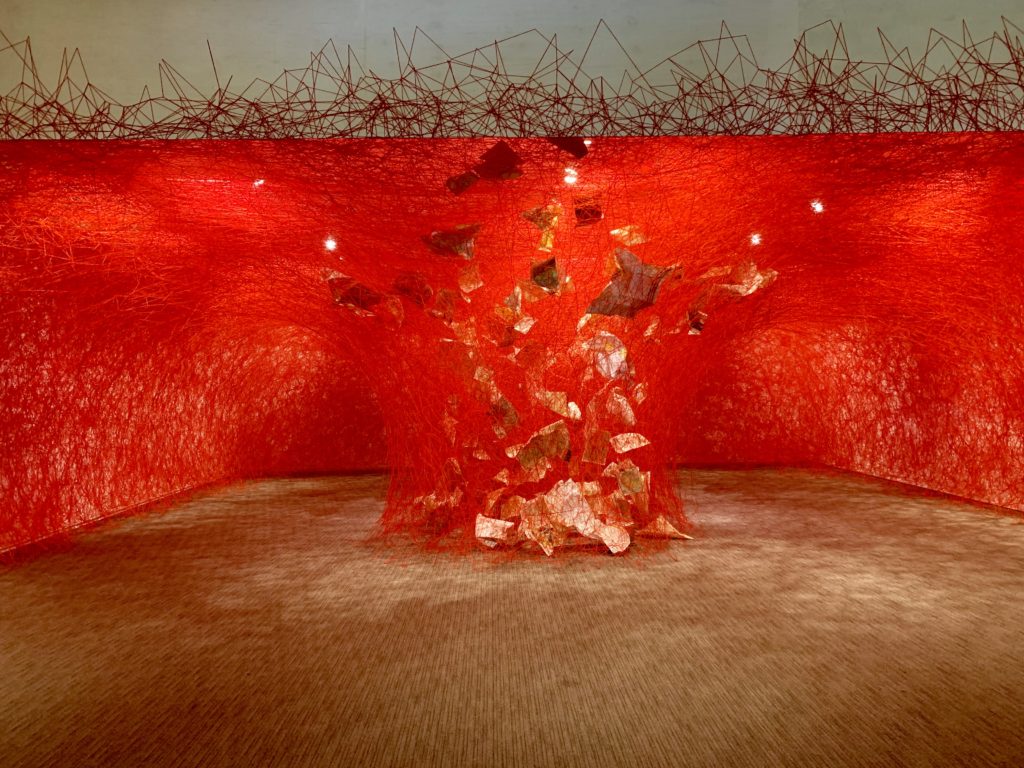
Chiharu Shiota, Crossroads (2019) at the Hub at Ward Village, Honolulu Biennial. Photo by Sarah Cascone.
The undisputed showstopper of the entire biennial, Crossroads is a explosive torrent of motion. Historical maps, swept up in Chiharu Shiota’s tornado of red woolen yarn, overwhelm viewers. Walking into the immersive installation is like walking into the eye of a storm, and the work is an impossibly complex whirlwind that conveys Hawaii’s unique position at a global crossroads.
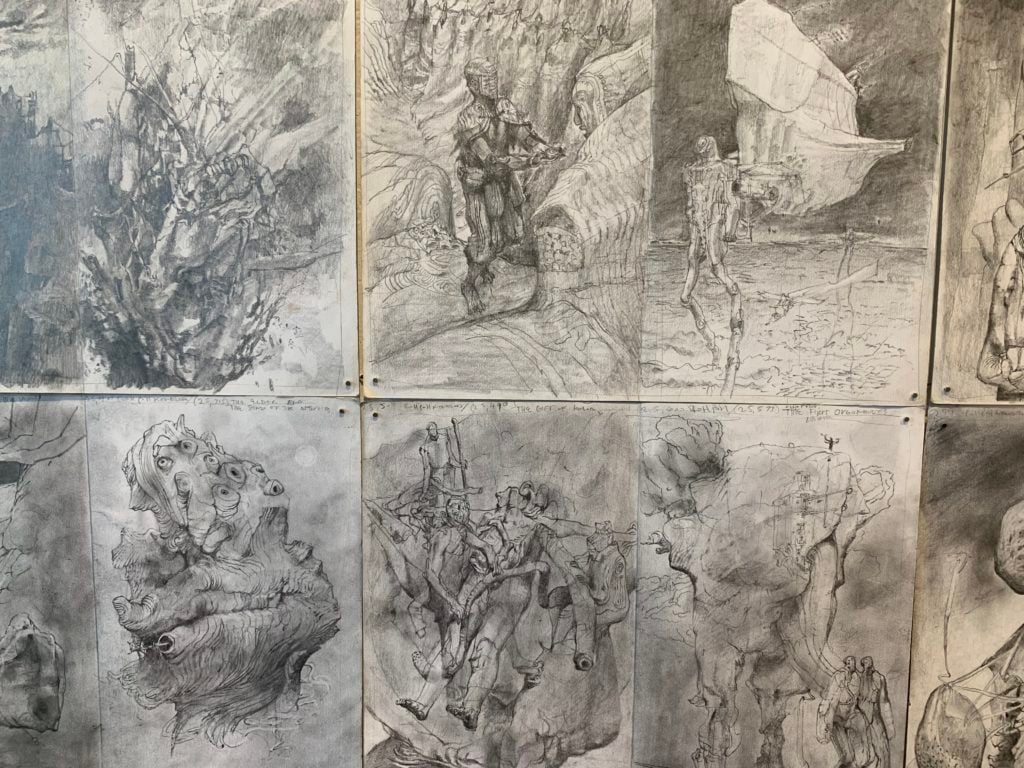
Solomon Enos, Polyfantastica at the Hub at Ward Village, Honolulu Biennial. Photo by Sarah Cascone.
Polyfantastica, Solomon Enos’s highly imaginative, utterly fascinating sci-fi epic, takes up an entire wall of the gallery with 200 graphite drawings. A member of Hawaii’s Kanaka Maoli tribe, Enos has imagined 40,000 years of Polynesian civilization, undisturbed by colonialism. It’s an answer to the question, “What if we were never interrupted?”
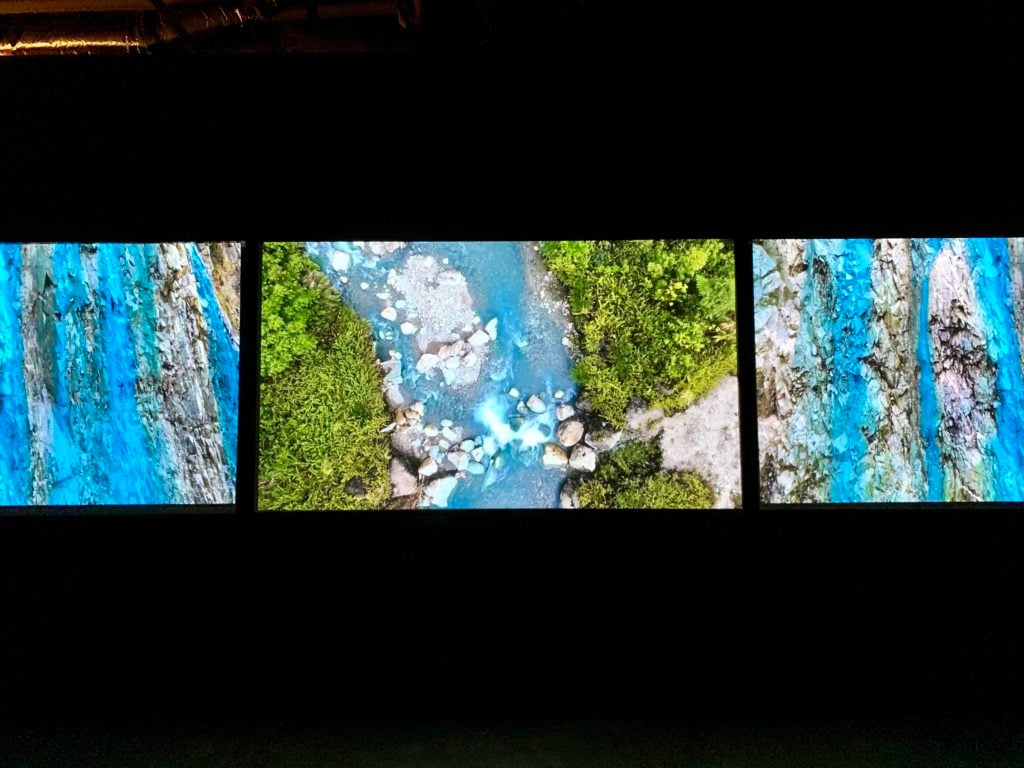
Taloi Havini, Habitat at the Hub at Ward Village, Honolulu Biennial. Photo by Sarah Cascone.
This deceptively beautiful three-channel video uncovers the lingering environmental effects of the now-shuttered Panguna Copper Mine in Papua New Guinea, which played a key role in igniting the Bougainville Civil War. Even amid lush greenery and flowing rivers, rusting infrastructure betrays a legacy of pollution and residual toxins.
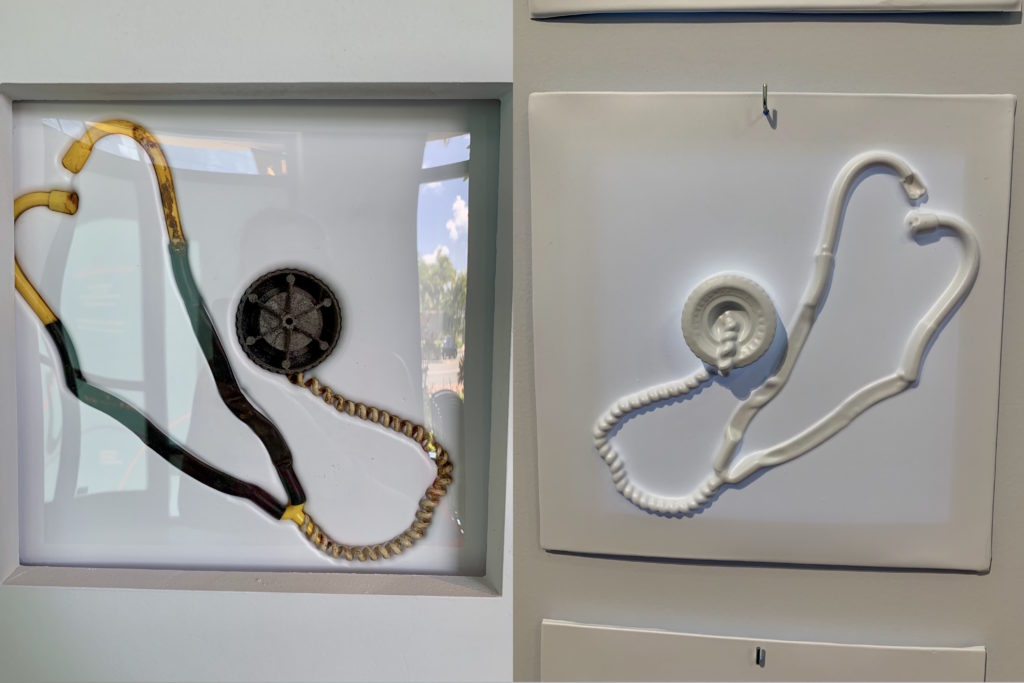
Maikai Tubbs, Toy Stories (two details), at the Hub at Ward Village, Honolulu Biennial. Photo by Sarah Cascone.
A little, unexpected piece of New York pops up in Maika’i Tubbs’s chapel-like installation displaying plastic trash and detritus from Dead Horse Bay in Brooklyn with a reverence normally reserved for saintly relics. Once you step inside the structure, you realize that each scavenged object is mounted in a custom plastic tray perfectly shaped to match its imprint, like the packaging commonly used for children’s toys.
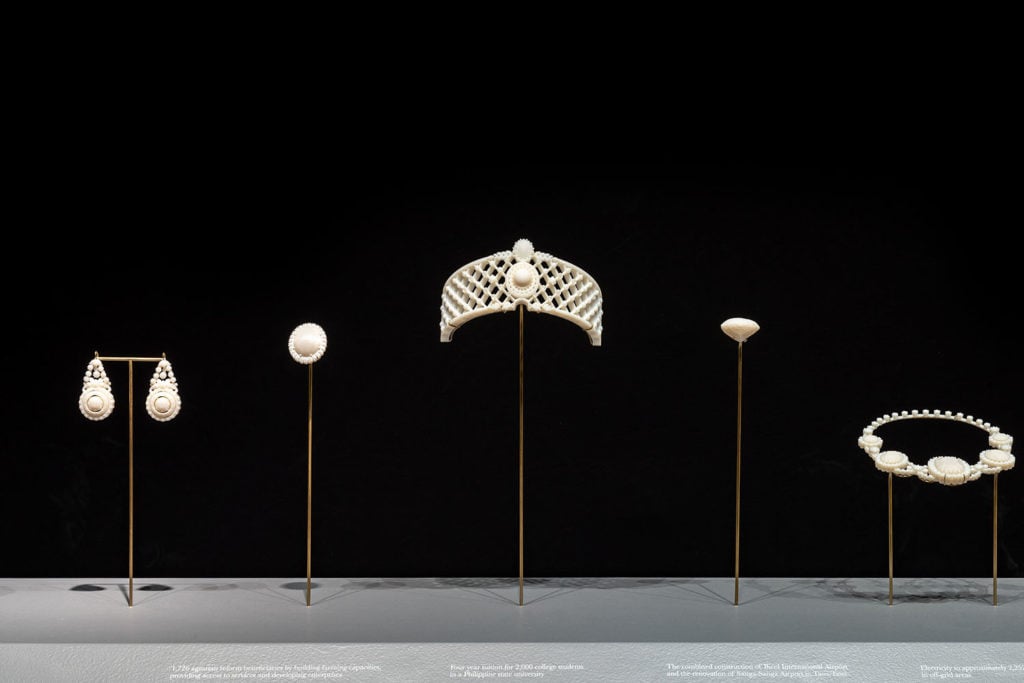
Pio Abad and Frances Wadsworth Jones, The Collection of Jane Ryan & William Saunders at the Hub at Ward Village, Honolulu Biennial. Photo courtesy of the artists.
When Philippine dictators Ferdinand and Imelda Marcos went into exile in Hawaii in 1986, US Customs seized their fabulous jewelry collection, represented here by 24 3D printed replicas created by artist Pio Abad with London jewelry brand Frances Wadsworth Jones. The Philippines once planned to sell the jewels at Christie’s as part of efforts to reclaim the Marcos’s ill-gotten gains, but the nation’s president, Rodrigo Duterte, cancelled the auction after taking office in 2016. Each piece includes a caption calculating what the jewelry’s sale could be worth to the Filipino people, such as four-year tuition at a national university for 2,000 students.
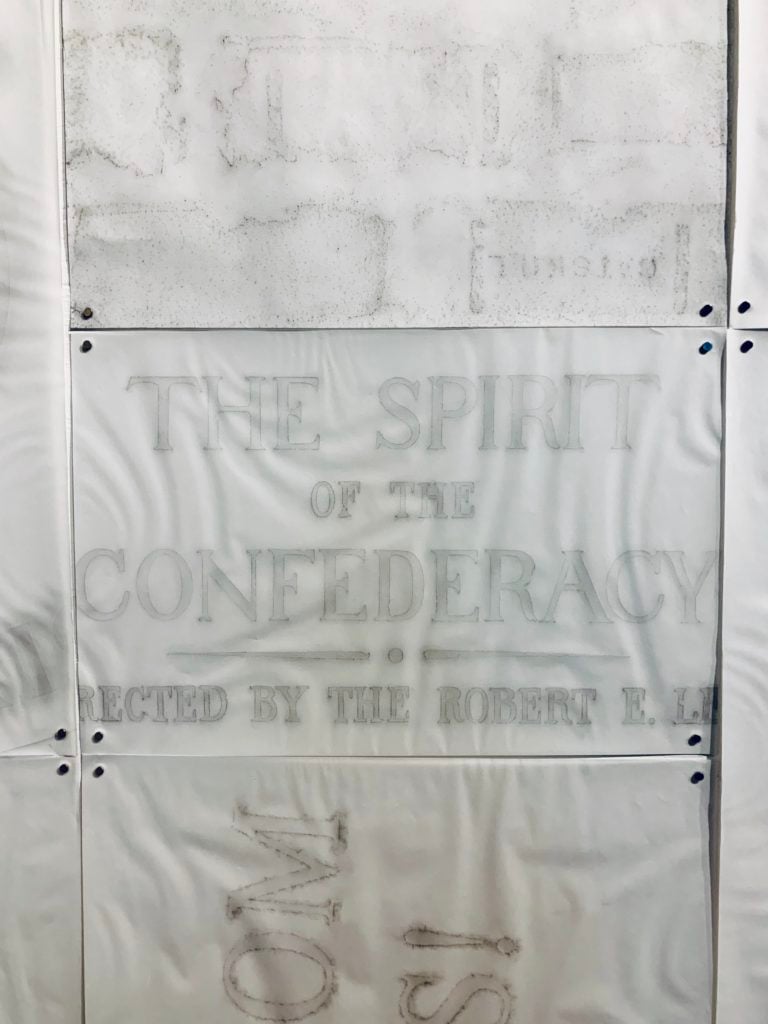
Mat Kubo, ShadowsWhispersTransfersPulls (detail) at the Hub at Ward Village, Honolulu Biennial. Photo by Sarah Cascone.
There has been a push recently to reconsider public statues and monuments to the Confederacy. Mat Kubo’s ShadowsWhispersTransfersPulls expands that debate to include the legacy of colonialism with a series of rubbings from historical locations in Houston, San Antonio, Galveston, and Honolulu. These faintly visible frottage works, done on translucent vellum, are surprisingly powerful when viewed en masse, and call for us to rethink what stories we want told in our public spaces—and who deserves to be memorialized.
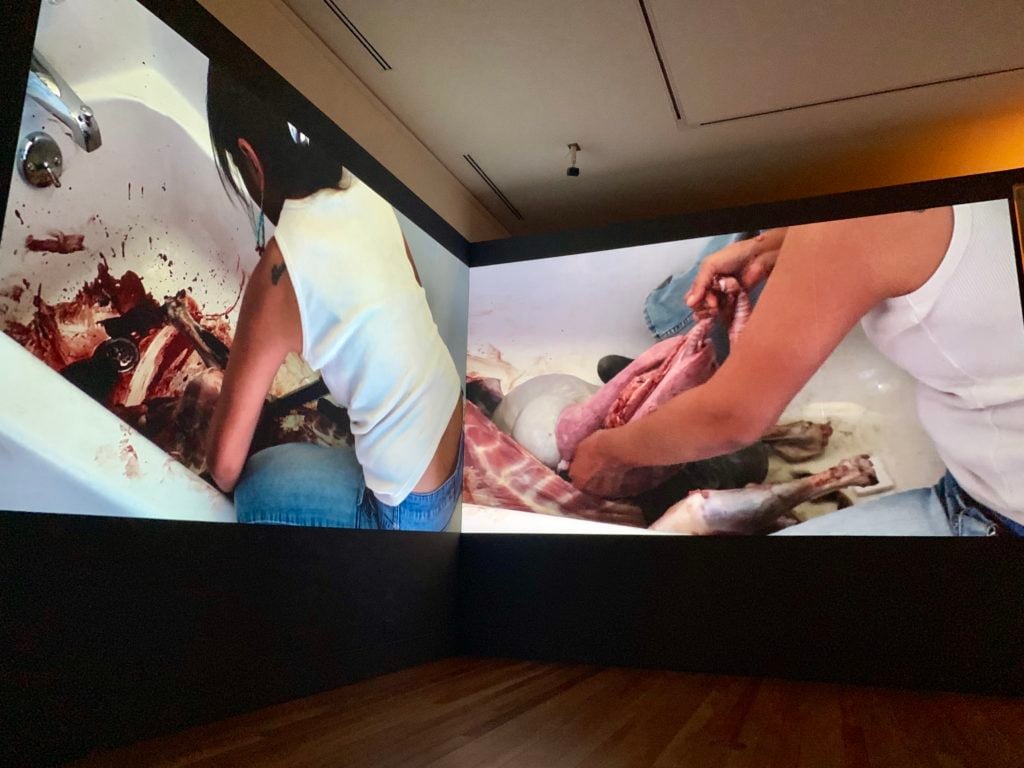
Occasionally, you’ll spot a sign at an art museum warning viewers of potentially disturbing content. This is an especially well-deserved case. Postcommodity’s nine-minute video spares no gruesome detail as a Navajo woman leads a sheep into a motel bathroom and proceeds to expertly butcher it, hacking off limbs and pulling out internal organs with her bare hands. By presenting the bloody butchering as a traditional act of an indigenous community, the video forces viewers to reevaluate their disgust. After all, why would this be any better taking place in a sterilized meatpacking plant?
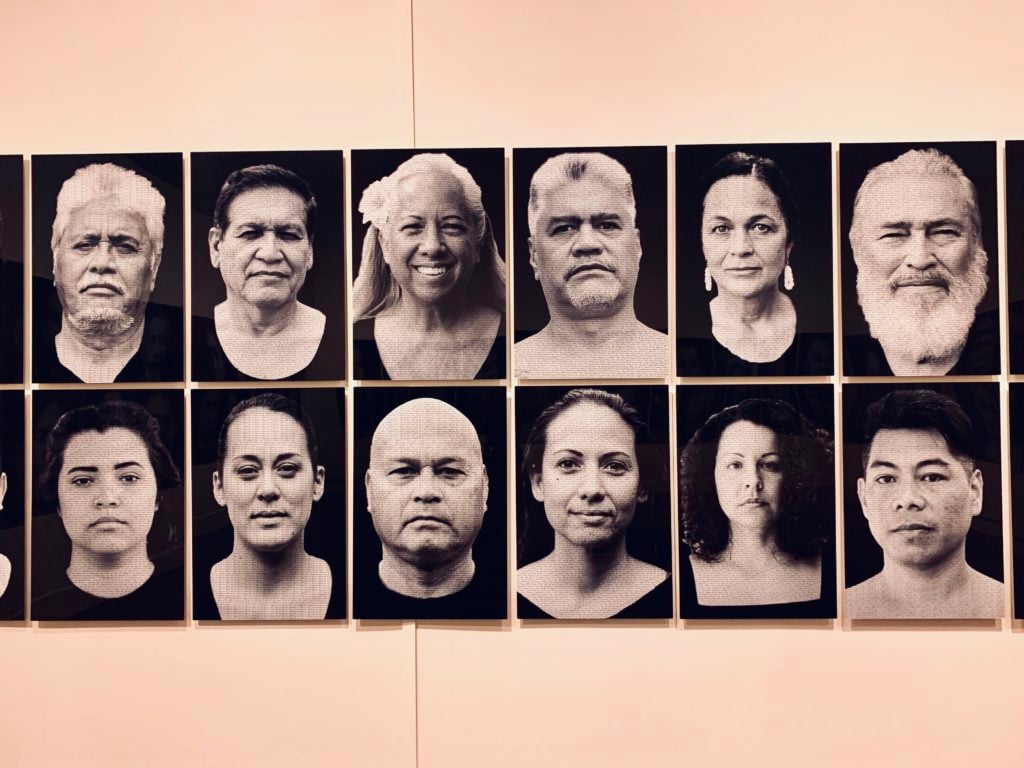
A compelling portrait series by Kapulani Landgraf presents images of over 100 native Hawaiian leaders. Atop each photograph, the artist has printed the repeating phrase “WE ARE NOT AMERICAN—HE HAWAII AU MAU A MAU.” The phase comes from Hawaiian nationalist activist Haunani K. Trask’s 1993 speech “We Are Not American,” given on the occasion of the centennial of the overthrow of the native Hawaiian monarchy. The recorded audio echoes on loop in the gallery, forcibly reminding viewers of the colonialist forces that brought the Aloha State into the union.